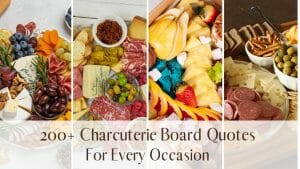Welcome to the enticing world of charcuterie boards, where delectable meats meet their perfect match: cheese. In this article, we embark on a flavorful journey to uncover the best cheeses that will take your charcuterie experience to new heights. From creamy Brie to tangy Gorgonzola, prepare to tantalize your taste buds with expert recommendations, pairing tips, and creative presentation ideas. Get ready to elevate your charcuterie game and become the ultimate host or hostess of unforgettable cheese and charcuterie moments. Let's dive in!
TIP: Unlock the art of charcuterie quickly and join over 514K enthusiasts! Click here to elevate your food art game now >>
Table of Contents [CLICK HERE TO OPEN]
- The Star Of The Show
- Understanding the Charcuterie Cheese Selection
- Unveiling the Best Cheese Options for Charcuterie
- Hard Cheese Selections
- Serving Tips and Creative Presentation Ideas
- Designing an Artful Charcuterie Board with Cheese
- Perfect Wine Pairings for Charcuterie Cheese
- Staying Ahead with Trends and Innovations
- Wrapping It Up
- Frequently Asked Questions
The Star Of The Show
Get ready to embark on a tantalizing journey into the world of charcuterie, where cured meats and delectable cheeses come together to create an unforgettable culinary experience. As you curate your charcuterie board, it's essential to understand the significance of selecting the perfect cheese to complement and elevate the flavors of your cured meats, condiments, and accompaniments.
Cheese plays a crucial role in harmonizing the diverse elements of a charcuterie spread. Just as a conductor guides an orchestra to create a symphony of flavors, choosing the right cheese for your charcuterie board sets the stage for a truly memorable tasting experience. Each cheese brings its own unique character, adding layers of texture, richness, and complexity to the ensemble.
In this article, our goal is to guide you through the vast array of cheese options, providing expert recommendations and insights to help you make informed choices for your charcuterie masterpiece. Whether you're a seasoned charcuterie enthusiast or new to the world of savory spreads, we've got you covered with tips, pairing suggestions, and creative presentation ideas that will impress even the most discerning palates.
So, let's dive into the captivating world of charcuterie and discover the best cheese selections that will take your board from ordinary to extraordinary. Get ready to delight your taste buds, entertain your guests, and become a charcuterie connoisseur. Let the cheese adventure begin!

Understanding the Charcuterie Cheese Selection
Types of Cheese for Charcuterie
When it comes to selecting the best cheese for your charcuterie board, it's essential to consider a variety of options that will delight your taste buds and create a harmonious balance of flavors. Let's explore the different types of cheeses that are perfect for your charcuterie spread:
Soft Cheeses: Embracing Creamy Indulgences
Soft cheeses are known for their luscious and velvety textures, which make them a delightful addition to any charcuterie board. Brie and Camembert, with their creamy centers and delicate rinds, offer a mild and buttery taste that effortlessly pairs with cured meats and fruity accompaniments. Spread these soft cheeses on a slice of crusty baguette, and let their smoothness melt in your mouth, creating a luxurious sensation.
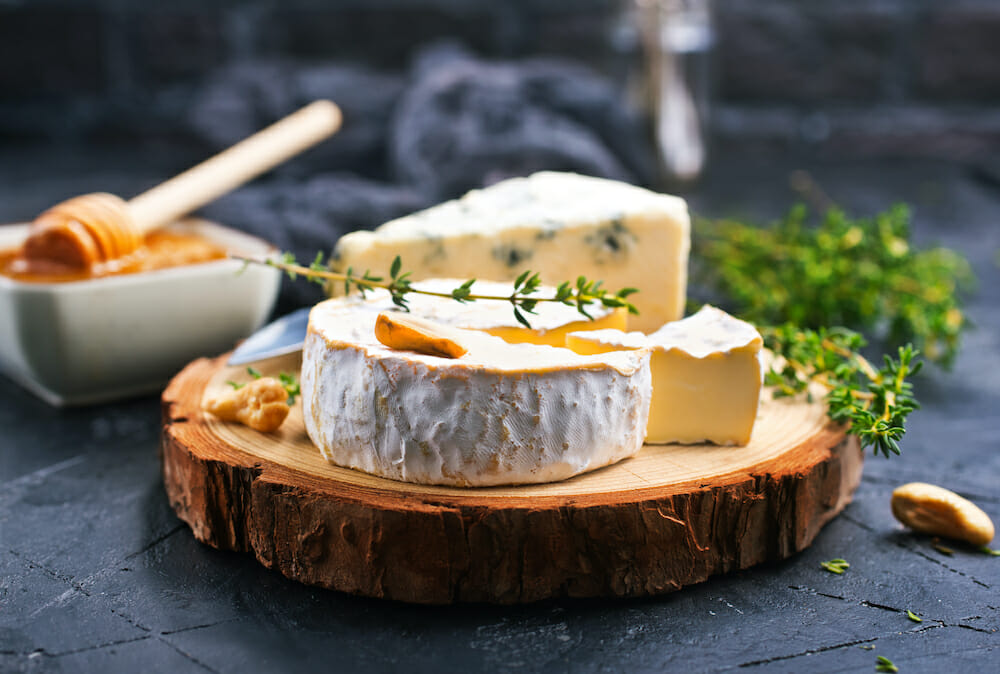
Hard Cheeses: Adding Depth and Intensity
For those seeking a cheese with more robust flavors and a firmer texture, hard cheeses are the way to go. Cheddar, Gouda, and Parmesan are popular choices that bring depth and complexity to your charcuterie board. Their sharper profiles provide a delightful contrast to the savory meats, while their firmness allows for easy slicing or crumbling. Consider pairing a sharp cheddar with a slice of spicy salami or shaving some Parmesan over a slice of prosciutto for an explosion of savory goodness.
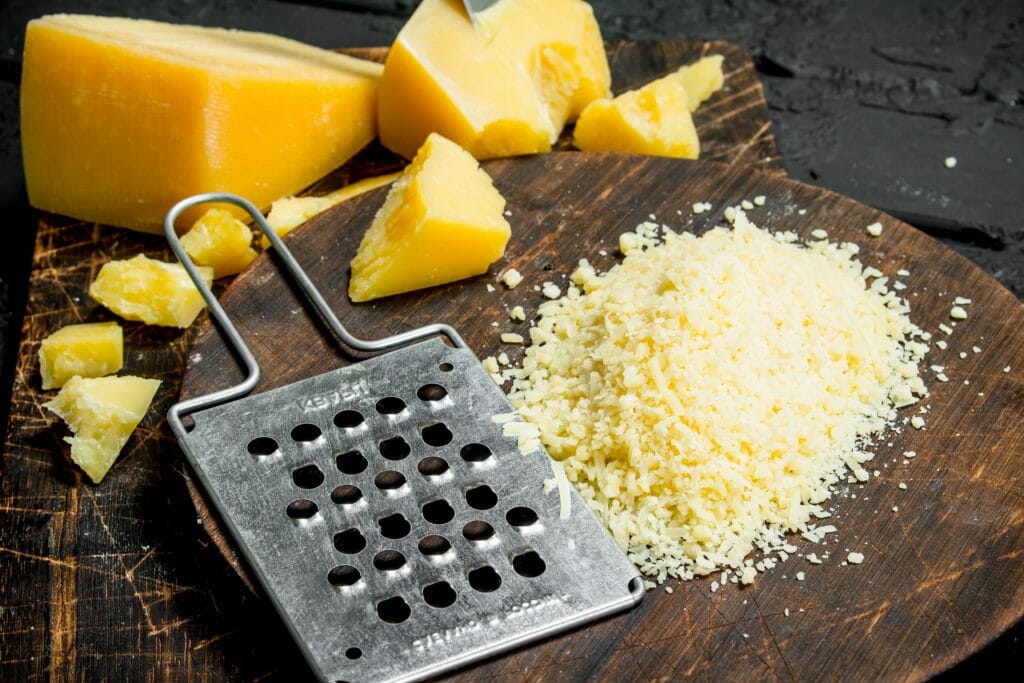
Blue Cheeses: Exploring Bold and Savory Options
If you're looking to add a touch of boldness to your charcuterie board, blue cheeses are the perfect choice. Roquefort, Stilton, or Gorgonzola boast distinctive blue veins that contribute to their rich and tangy flavors. These cheeses offer a complex taste that balances well with the saltiness of cured meats, creating a captivating flavor combination. Crumble some blue cheese onto a slice of crusty bread or pair it with a slice of smoky bacon for a taste experience that will leave your palate craving more.
Aged Cheeses: Unveiling Complex Flavors
Aged cheeses, such as Manchego or Gruyere, bring a world of complexity to your charcuterie board. With their concentrated flavors and crumbly textures, these cheeses offer a journey of taste with every bite. Manchego, a Spanish cheese with its nutty and slightly tangy profile, pairs beautifully with cured meats like chorizo or serrano ham. Gruyere, on the other hand, with its sweet and nutty notes, creates a delightful harmony with prosciutto or coppa.
By incorporating a selection of soft, hard, blue, and aged cheeses, you create a charcuterie board that showcases a diverse range of flavors and textures. Consider your guests' preferences and experiment with different combinations to create a truly memorable and personalized charcuterie experience.
As we embark on our cheese exploration for charcuterie, keep in mind that our goal is to provide you with expert recommendations and insights to help you curate a remarkable charcuterie board. Stay with us as we delve further into the art of charcuterie cheese pairings, presentation ideas, and the secrets of creating a truly unforgettable culinary masterpiece.
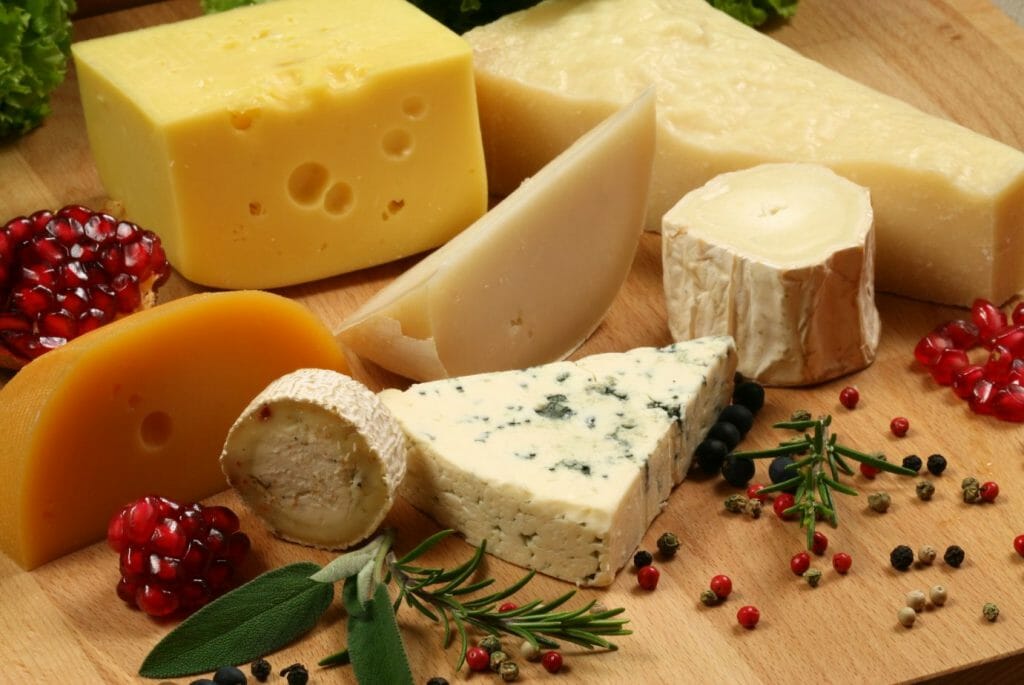
Pairing Cheese with Charcuterie
Finding the Perfect Meat and Cheese Harmony
Creating a well-balanced charcuterie board involves finding the perfect harmony between your choice of meats and cheeses. Each cheese has its unique flavor profile, and pairing it with the right type of cured meat can elevate the taste experience to new heights. Consider these combinations:
- Pair a creamy Brie with slices of delicate prosciutto for a delightful contrast of smoothness and saltiness.
- Match the robust flavors of a sharp cheddar with a slice of spicy salami to create a harmonious blend of tanginess and heat.
- Balance the boldness of blue cheese with the richness of smoky bacon for a savory explosion on your taste buds.
- Combine the nutty notes of Manchego with thinly sliced serrano ham to transport your palate to the sun-soaked landscapes of Spain.
By thoughtfully pairing the textures, flavors, and intensities of your chosen meats and cheeses, you'll create a charcuterie board that offers a symphony of complementary tastes.
Unlocking the Secrets of Wine and Cheese Pairings
To take your charcuterie experience to the next level, consider pairing your cheese selections with the perfect wine. The right wine can enhance the flavors of both the cheese and the charcuterie, creating a delightful sensory experience. Here are some classic wine and cheese pairings to consider:
- A creamy, soft cheese like Brie or Camembert pairs beautifully with a light and crisp white wine, such as Sauvignon Blanc or Chardonnay.
- For hard cheeses like Cheddar or Gouda, opt for a medium-bodied red wine like Merlot or Pinot Noir to complement their robust flavors.
- Blue cheeses, with their bold and tangy profiles, pair wonderfully with sweet dessert wines like Port or Sauternes.
- Aged cheeses like Manchego or Gruyere can be enjoyed with a full-bodied red wine such as Cabernet Sauvignon or Malbec for a rich and satisfying combination.
Remember, these are just starting points, and exploring different wine and cheese pairings can be an enjoyable adventure of discovery.
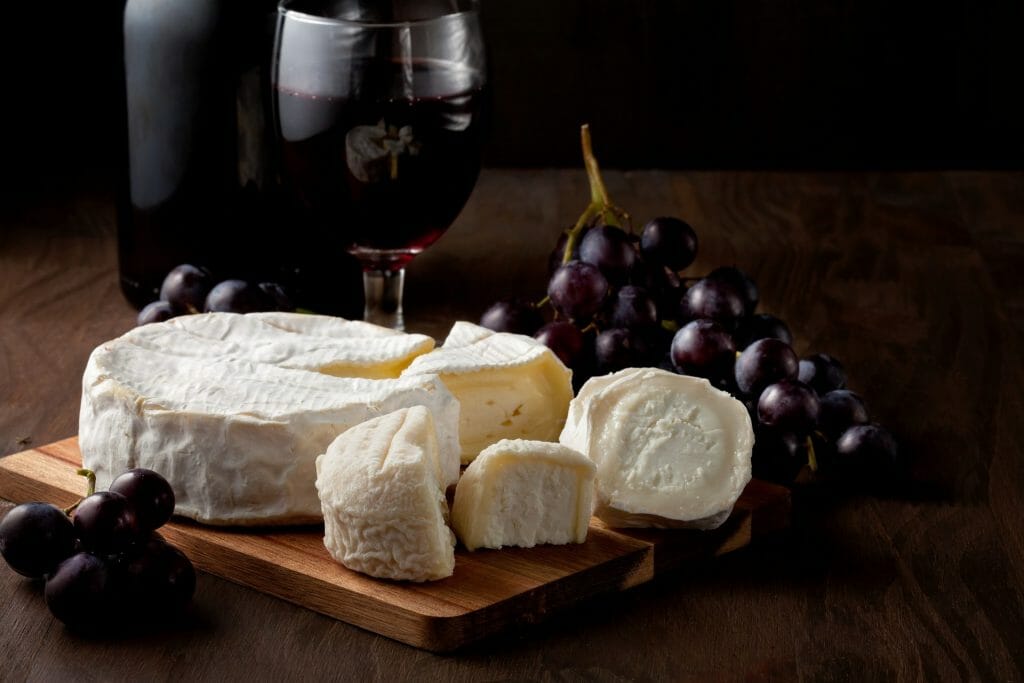
Elevating Flavors with Complementary Condiments, Fruits, and Nuts
To add a delightful variety of flavors and textures to your charcuterie board, don't forget to include complementary condiments, fruits, and nuts. These additions can enhance the overall experience and create exciting taste combinations. Consider the following ideas:
- Pair a slice of sharp cheddar with a dollop of tangy chutney or a drizzle of honey for a sweet and savory fusion.
- Add a handful of grapes or slices of fresh figs to accompany your creamy Brie or blue cheese, adding a touch of natural sweetness.
- Include a selection of nuts, such as almonds, walnuts, or pistachios, to provide a satisfying crunch and additional layers of flavor.
These accompaniments not only enhance the flavors of the cheese and charcuterie but also offer a visually appealing and dynamic presentation on your charcuterie board.
As we delve deeper into the art of pairing cheese with charcuterie, we build upon our understanding of the different types of cheeses and their unique qualities. By combining the perfect meat and cheese harmony, unlocking the secrets of wine and cheese pairings, and elevating flavors with complementary condiments, fruits, and nuts, you'll create a charcuterie experience that is truly exceptional.
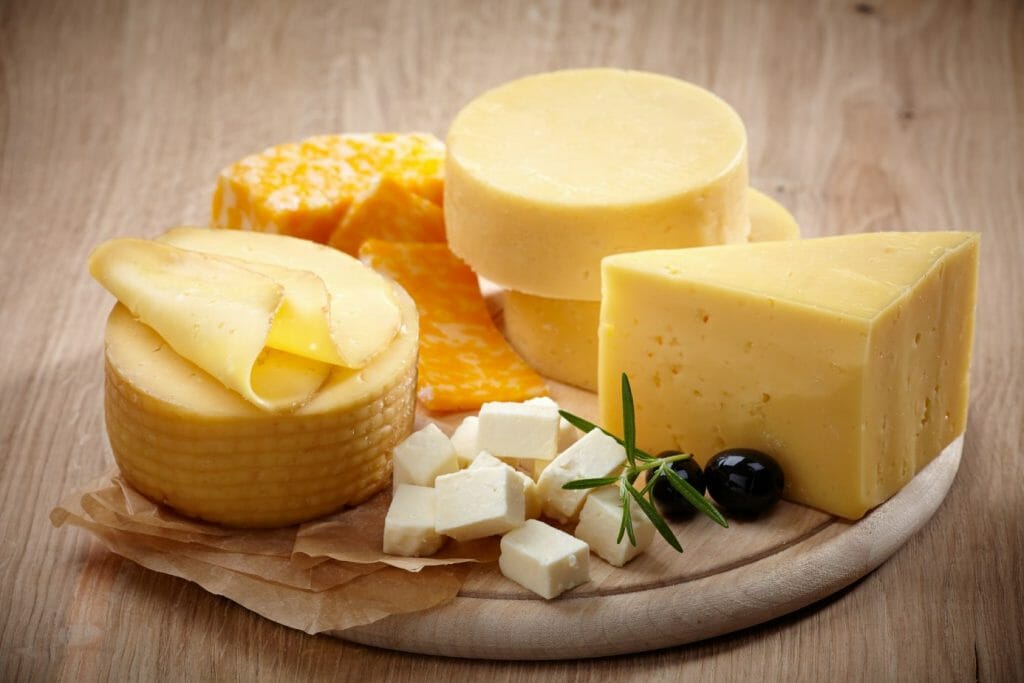
Unveiling the Best Cheese Options for Charcuterie
Soft Cheese Delights
When it comes to creating an exceptional charcuterie board, soft cheeses offer a delightful range of flavors, textures, and aromas. Let's explore some of the best soft cheese options that are sure to elevate your charcuterie experience.
Brie: The Quintessential Creamy Indulgence
Brie cheese is a classic choice that never fails to impress. With its velvety texture and rich, buttery flavor, Brie adds a touch of elegance to any charcuterie board. This soft cheese pairs beautifully with a variety of cured meats and can be enjoyed on its own or spread on a slice of crusty baguette. The creamy, mild character of Brie complements the saltiness of cured meats, creating a harmonious balance of flavors.
Camembert: Aromatic and Velvety Elegance
Similar to Brie, Camembert cheese offers a creamy and indulgent experience. This French cheese is known for its earthy and mushroom-like aroma, which adds a distinct character to your charcuterie board. The soft and velvety texture of Camembert pairs wonderfully with cured meats, providing a creamy counterpoint to their saltiness. Enjoy Camembert with a slice of prosciutto or salami for a combination that is both sophisticated and satisfying.
Goat Cheese: Tangy and Refreshing Delicacy
For those who prefer a tangy and refreshing flavor profile, goat cheese is an excellent choice for your charcuterie board. Known for its distinctively bright and acidic taste, goat cheese offers a refreshing contrast to the richness of cured meats. Whether in the form of creamy chèvre or crumbled feta, goat cheese adds a unique touch to your charcuterie experience. Pair it with thinly sliced chorizo or serrano ham for a delightful balance of flavors.

Hard Cheese Selections
As we continue our exploration of the best cheese options for charcuterie, let's delve into the world of hard cheeses. These cheeses offer a firm texture, intense flavors, and a delightful depth that perfectly complements cured meats. Let's discover some exceptional hard cheese selections that will elevate your charcuterie board to new heights.
Cheddar: Classic and Versatile
Cheddar cheese is a timeless favorite that effortlessly pairs with a wide range of charcuterie. Its smooth and slightly crumbly texture, combined with a rich, nutty flavor, makes it a versatile choice for any charcuterie board. Whether you opt for a mild or aged cheddar, this cheese provides a satisfying contrast to the savory meats. Try pairing it with slices of smoky ham or spicy pepperoni for a delightful combination that will leave your taste buds craving more.
Gouda: Nutty and Buttery Splendor
Gouda cheese is a true crowd-pleaser, known for its smooth, creamy texture and distinct nutty flavor. With its buttery undertones, Gouda complements charcuterie beautifully, adding a touch of richness to every bite. From mild young Gouda to aged varieties with caramel notes, there's a Gouda cheese for every preference. Enjoy it alongside slices of tangy salami or thinly shaved prosciutto to create a symphony of flavors on your charcuterie board.
Parmesan: Rich and Aromatic Umami
Parmesan cheese, also known as Parmigiano-Reggiano, is a hard cheese that packs a punch of flavor. With its granular texture and bold, nutty taste, Parmesan brings a depth of umami to your charcuterie board. Grate it over cured meats or serve it in shavings for guests to enjoy. The salty and complex profile of Parmesan adds a distinctive character to your charcuterie combinations. Try it with slices of air-dried beef or a drizzle of honey for an irresistible blend of savory and sweet.

Exploring Bold Blue Cheeses
Prepare to embark on a flavorful adventure as we dive into the world of bold blue cheeses. These cheeses are a true charcuterie delight, offering a distinct and captivating taste that adds a touch of sophistication to your board. Let's explore some exceptional blue cheese options that will take your charcuterie experience to the next level.
Roquefort: Intensely Tangy and Complex
Roquefort, a beloved French blue cheese, is renowned for its distinct tangy flavor and rich, crumbly texture. Made from sheep's milk, this cheese boasts an exquisite complexity that delights the palate. Its characteristic blue-green veins give it a striking appearance, and its sharp yet balanced taste pairs wonderfully with a variety of cured meats. For an exceptional combination, try it with slices of smoky bacon or prosciutto, allowing the contrasting flavors to harmonize in each bite.
Stilton: Creamy and Earthy Blue Marvel
Hailing from England, Stilton cheese is a true blue marvel. With its crumbly yet creamy texture and earthy flavor, Stilton offers a unique experience for charcuterie enthusiasts. The blue veins running through its ivory-colored paste provide an intriguing visual appeal. This cheese pairs beautifully with bold flavors like spicy salami or chorizo, creating a delightful interplay of tastes and textures that will leave your guests impressed.
Gorgonzola: Creamy with a Delicate Bite
Gorgonzola cheese, originating from Italy, is renowned for its creamy consistency and delicate blue veining. It offers a perfect balance of mild sweetness and piquant tang, making it a versatile choice for your charcuterie board. Whether you prefer the milder Dolce Gorgonzola or the sharper Piccante variety, this cheese brings a luxurious creaminess to your selections. Pair it with slices of tender prosciutto or spread it on a slice of baguette for a delightful combination that highlights its unique characteristics.

Indulging in Aged Cheese Varieties
As we explore the world of charcuterie cheese, it's time to delve into the realm of aged cheeses. These cheeses have undergone a transformative process, resulting in complex flavors and unique characteristics that add depth to your charcuterie board. Let's discover some exceptional aged cheese varieties that will take your charcuterie experience to the next level.
Manchego: Nutty and Butterscotch Undertones
Originating from Spain, Manchego is a beloved aged cheese with a distinctive flavor profile. Made from sheep's milk, it offers a delightful combination of nuttiness and subtle butterscotch undertones. The firm and compact texture of Manchego makes it easy to slice and enjoy on your charcuterie board. Pair it with a medium-bodied red wine like a Tempranillo or a dry Sherry for a delightful flavor combination.
Gruyère: Subtly Sweet and Nutty Swiss Classic
Hailing from Switzerland, Gruyère is a cheese with a rich history and a reputation for excellence. Its flavors are subtly sweet and nutty, making it a versatile choice for charcuterie boards. Gruyère melts beautifully and has a smooth texture, making it an excellent addition to a grilled cheese sandwich or a decadent fondue. When it comes to wine pairing, Gruyère pairs well with medium-bodied red wines like Merlot or Pinot Noir.
Pecorino: Robust and Salty Italian Beauty
From the picturesque landscapes of Italy comes Pecorino, a robust and salty aged cheese made from sheep's milk. Pecorino offers a unique combination of flavors, ranging from savory and slightly tangy to delightfully salty. This cheese adds a distinct character to your charcuterie board and pairs well with a variety of accompaniments, such as olives, figs, or honey. Consider pairing Pecorino with a bold and fruity red wine like Sangiovese or a crisp and dry white wine like Vermentino.
These aged cheese varieties bring depth and complexity to your charcuterie board, enticing your taste buds with their unique flavors. Experiment with different combinations of meats, condiments, and bread varieties to create a harmonious balance of tastes and textures. Remember, the beauty of charcuterie lies in the art of combining flavors and allowing each component to shine.

Serving Tips and Creative Presentation Ideas
Designing an Artful Charcuterie Board with Cheese
Now that you have selected the best cheese options for your charcuterie board, it's time to turn it into a work of art. The way you present your cheese can elevate the overall experience and leave a lasting impression on your guests. Here are some tips to help you create a visually stunning and enticing charcuterie presentation:
Pairing Cheese with Meats, Crackers, and Bread Varieties
Consider the interplay of flavors and textures when arranging your cheese selections. Pair soft cheeses, like Brie or Camembert, with thinly sliced cured meats such as prosciutto or salami. The creaminess of the cheese beautifully complements the saltiness and richness of the meats.
Hard cheeses, like Cheddar or Gouda, can be paired with more robust cured meats like pepperoni or soppressata. Their firm texture and intense flavors create a delightful contrast when enjoyed together.
When it comes to crackers and bread, choose a variety of options to provide different textures and flavors. Consider including baguette slices, crispy crackers, and artisanal bread. These options offer a canvas for the cheese and meat combinations, allowing the flavors to shine.
Garnishing Techniques to Elevate Your Cheese Selections
Garnishes can add visual appeal and enhance the overall taste experience. Consider incorporating a variety of colorful fruits, such as grapes, berries, or slices of figs. These fresh and vibrant additions provide a refreshing balance to the richness of the cheese.
Fresh herbs, such as basil or rosemary, can also add a touch of elegance and aromatic notes. Sprinkle them sparingly over the cheese selections or use them as decorative accents around the board.
Nuts, such as almonds or walnuts, offer a delightful crunch and a nutty flavor that complements the cheese. Consider placing small bowls of mixed nuts strategically around the board for guests to enjoy alongside their cheese and meat combinations.
As we've explored the best cheese options for charcuterie, including the indulgent soft cheeses, the depth of hard cheeses, and the boldness of blue cheeses, it's important to present them in a way that captivates both the eyes and the taste buds. By carefully considering the pairing of cheeses with meats, crackers, and bread varieties, as well as incorporating visually appealing garnishes, you can create an artful charcuterie board that is sure to impress.
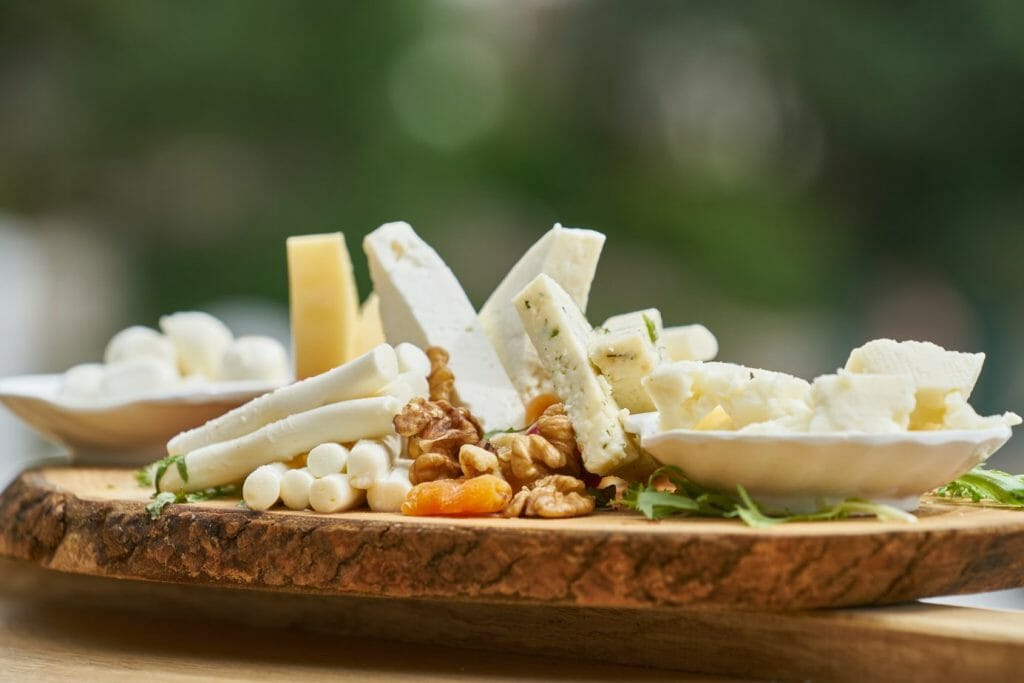
Perfect Wine Pairings for Charcuterie Cheese
No charcuterie experience is complete without the perfect wine pairing. When selecting wines to accompany your cheese and charcuterie board, it's essential to consider the flavors, textures, and intensity of both the cheeses and the meats. Let's explore some excellent wine pairings that will elevate your charcuterie experience to new heights.
Soft Cheeses
Soft cheeses like Brie, Camembert, and Goat cheese have creamy and delicate flavors that call for wines with a gentle touch. Opt for light to medium-bodied white wines, such as Chardonnay, Sauvignon Blanc, or a crisp Rosé. These wines provide a refreshing acidity that cuts through the richness of the cheeses and complements their creamy textures. Additionally, if you prefer red wines, you can try a light-bodied Pinot Noir, which has enough acidity to enhance the flavors without overpowering the delicate cheeses.
Hard Cheeses
Hard cheeses like Cheddar, Gouda, and Parmesan offer robust flavors and firmer textures. These cheeses pair well with medium to full-bodied red wines. Consider Cabernet Sauvignon, Merlot, or Syrah for a bold and harmonious combination. The tannins in these red wines complement the richness of the hard cheeses and provide a lovely contrast. For white wine lovers, an oaked Chardonnay or a buttery Chardonnay pairs nicely with the nutty flavors of Gouda and the sharpness of Cheddar.
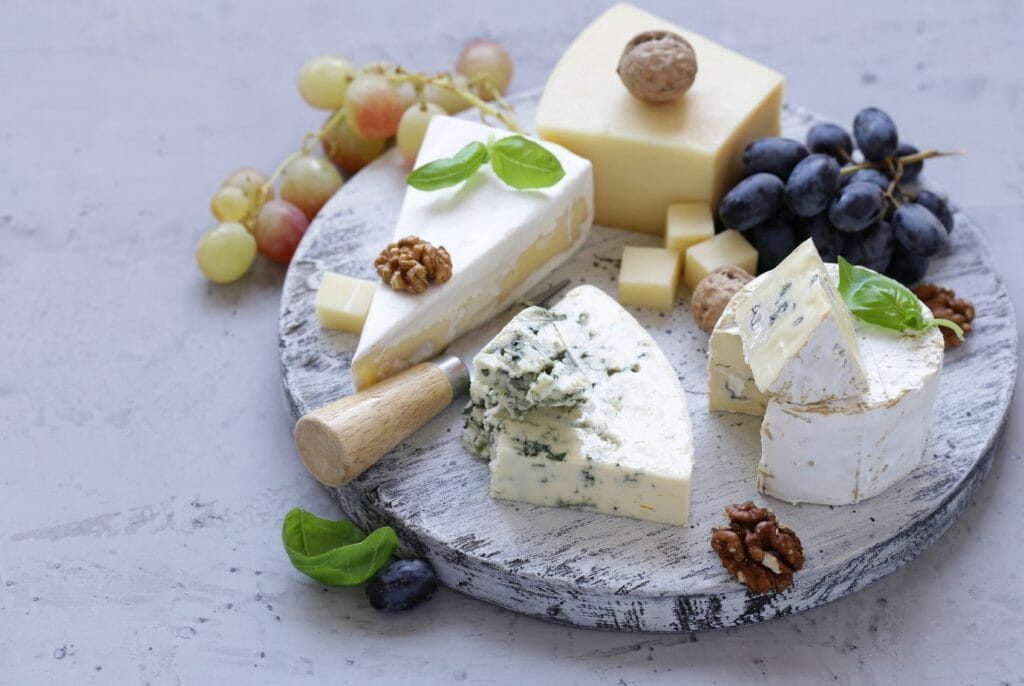
Blue Cheeses
Blue cheeses like Roquefort, Stilton, and Gorgonzola are known for their pungent, bold, and savory flavors. To balance the intensity of these cheeses, opt for sweet and fortified wines. A classic pairing is a rich, sweet dessert wine like Port, which offers a perfect balance of sweetness and acidity. Another excellent choice is a Sauternes, a luscious white wine with honeyed notes. The sweetness of these wines complements the saltiness and creaminess of the blue cheeses, creating a memorable taste experience.
Aged Cheeses
Aged cheeses like Manchego, Gruyère, and Pecorino have developed complex flavors over time. These cheeses pair wonderfully with medium to full-bodied red wines. Consider a bold and fruity red like Cabernet Sauvignon, Malbec, or Sangiovese. The robust flavors of the aged cheeses harmonize with the rich and velvety characteristics of these wines. Additionally, if you prefer white wine, an oaked Chardonnay or a Viognier can provide a delightful contrast to the aged cheese's savory notes.
Remember, these wine pairing suggestions serve as a starting point, and personal preferences may vary. Feel free to experiment and explore different combinations to find your perfect match. Ultimately, the goal is to create a harmonious balance of flavors where the wine enhances the characteristics of the cheese and vice versa.
So, as you assemble your charcuterie board, take the time to select wines that will complement and elevate the flavors of your cheeses and meats. A thoughtfully chosen wine pairing can truly enhance your charcuterie experience, creating a sensory journey that delights the palate and leaves a lasting impression. Cheers to the perfect union of cheese, charcuterie, and wine!
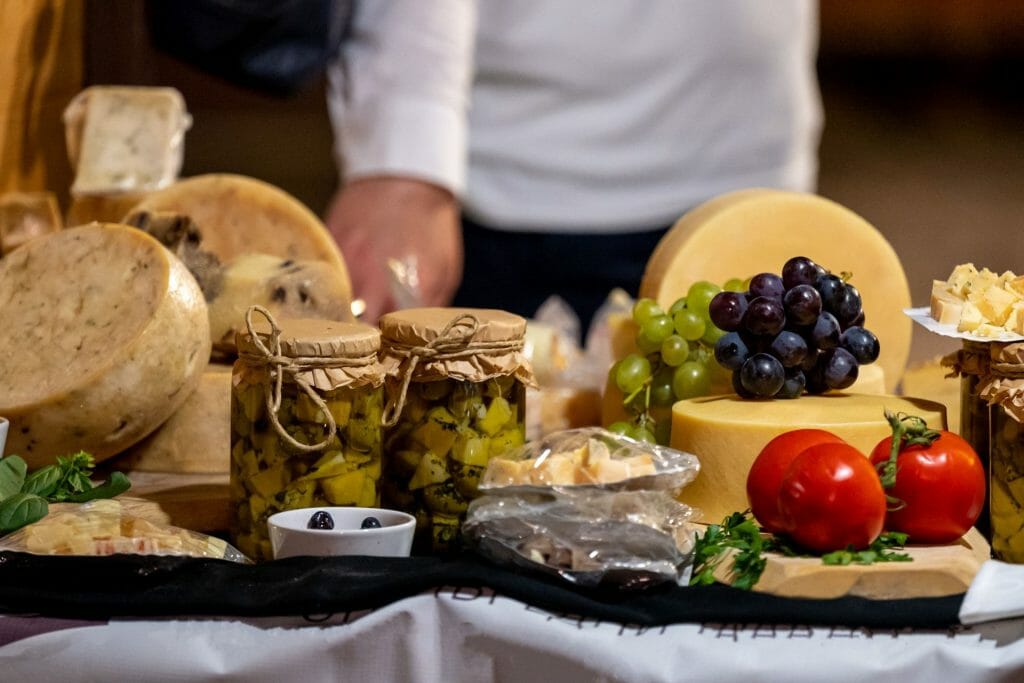
Staying Ahead with Trends and Innovations
Exploring Artisanal and Specialty Cheeses
While we have covered some of the classic and popular cheese options for charcuterie, it's always exciting to venture into the world of artisanal and specialty cheeses. These unique varieties offer a chance to discover new flavors and elevate your charcuterie experience. Here are some trends and innovations to consider when selecting cheeses for your board:
Seasonal Variations and Pairing Inspirations
Just like the seasons bring changes to the culinary landscape, they also influence the availability and flavors of cheeses. Embrace seasonal variations by incorporating cheeses that showcase the best of each time of year. In the spring, consider fresh and delicate goat cheeses that pair beautifully with vibrant greens and young vegetables. During the summer, explore the world of soft, bloomy-rind cheeses that are creamy and indulgent. In the fall, embrace earthy and nutty flavors with aged cheeses like Gruyere or Comté. And during the winter, savor rich and robust cheeses such as Roquefort or aged cheddars.
When it comes to pairings, let the season inspire you. For a summer charcuterie board, complement your cheeses with juicy slices of ripe peaches or a drizzle of honey. In the fall, pair aged cheeses with sliced apples or caramelized onions. Experimenting with seasonal variations can add an extra layer of excitement to your charcuterie experience.

Unique Flavor Combinations and Pairings
To truly impress your guests, consider exploring unique flavor combinations and pairings. Don't be afraid to think outside the box and experiment with unexpected pairings that surprise and delight the palate. For example, try pairing a creamy blue cheese with dark chocolate or a tangy goat cheese with a spicy chutney. These surprising combinations can create a harmonious balance of flavors and elevate your charcuterie board to new heights.
Artisanal and specialty cheese shops are excellent places to discover these unique flavor profiles. Engage with knowledgeable cheesemongers who can guide you through their selection and offer suggestions based on your preferences.
Wrapping It Up
As we come to the end of our journey exploring the world of charcuterie cheese, it's clear that cheese plays a vital role in creating exceptional charcuterie experiences. From soft and creamy indulgences like Brie and Camembert to the bold and savory options of blue cheeses like Roquefort and Stilton, each cheese brings its unique flavors and textures to the table. The right cheese selection can enhance the flavors of the meats, complement the accompanying condiments, and elevate the overall taste sensation.
With such a vast array of cheese options available, we encourage you to experiment and find your personal favorites. Visit local cheese shops, talk to cheesemongers, and sample a variety of cheeses to discover the ones that excite your palate. The beauty of charcuterie is its versatility and adaptability, allowing you to tailor your board to your own taste preferences.
As you embark on your charcuterie journey, armed with the knowledge and insights from this article, we hope you feel inspired to create exceptional charcuterie experiences for yourself and your loved ones. Whether you're hosting a casual gathering or celebrating a special occasion, a thoughtfully crafted charcuterie board with the perfect cheese selection is sure to impress and delight.
So go ahead, embrace the world of charcuterie cheese, and let your creativity soar. Explore new flavors, pairings, and presentation ideas to curate a charcuterie board that is a true reflection of your unique tastes and style. The possibilities are endless, and the rewards are delicious.
Remember, the best cheese for charcuterie is the one that brings you joy and leaves you craving another bite. Cheers to the art of charcuterie, and may your culinary adventures be filled with delectable cheeses and memorable moments!
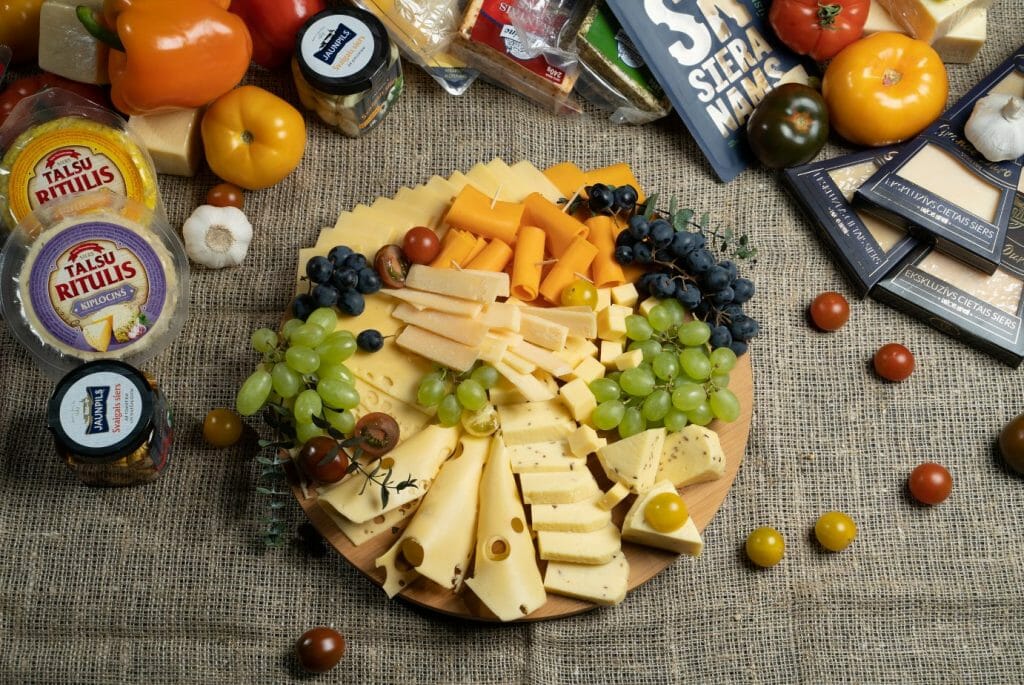
Frequently Asked Questions
Should a charcuterie board have cheese?
Yes, a charcuterie board can include cheese. Cheese is a classic and essential component of a charcuterie board, providing a complementary and contrasting element to the cured meats, fruits, and other accompaniments. Including a variety of cheeses on your charcuterie board enhances the overall flavor profile and offers a delightful combination of textures and tastes. It is common to select a mix of soft, hard, blue, and aged cheeses to cater to different preferences and add depth to the board. Experiment with different cheese options to create a well-rounded and visually appealing charcuterie experience.
What cheeses are normally on a charcuterie board?
Common cheeses found on a charcuterie board include Brie, Camembert, Cheddar, Gouda, Blue Cheese (such as Roquefort or Stilton), and Aged Cheeses (such as Manchego or Gruyere). These cheeses offer a range of flavors, textures, and profiles to complement the cured meats and other accompaniments. It's important to select a mix of soft, hard, blue, and aged cheeses to provide variety and cater to different preferences. Additionally, incorporating local or artisanal cheeses can add a unique touch to your charcuterie board. Remember to consider the overall balance and harmony of flavors when choosing cheeses for your board.
Is brie cheese good for charcuterie?
Yes, Brie cheese is an excellent choice for charcuterie boards. Its creamy and buttery texture pairs well with a variety of cured meats, fruits, and condiments. Brie's mild and slightly earthy flavor provides a pleasant contrast to the savory and salty profiles of the charcuterie meats. When serving Brie on a charcuterie board, consider allowing it to come to room temperature for optimal taste and texture. Additionally, you can enhance the experience by pairing Brie with crusty bread, grapes, honey, or even a touch of fig jam.
Is Camembert good for charcuterie?
Yes, Camembert is a great choice for charcuterie boards. Its soft and creamy texture, combined with its rich and slightly tangy flavor, complements the cured meats and other components of a charcuterie spread. Camembert pairs well with a variety of cured meats, crusty bread, fruits, and even honey or fig jam. When serving Camembert, allow it to reach room temperature to enhance its flavors and make it more spreadable. Including Camembert on your charcuterie board adds a delightful and indulgent element to the overall experience.
How early to cut cheese for charcuterie?
It's recommended to cut the cheese for charcuterie shortly before serving. This helps maintain the cheese's freshness and prevents it from drying out. Cutting the cheese too early can expose it to air and potentially affect its texture and flavor. To ensure optimal taste and presentation, prepare the charcuterie board with all the other components first and then slice the cheese just before your guests are ready to enjoy it. This way, the cheese will be at its best when it's time to indulge in the charcuterie experience.
How do you pair cheeses with charcuterie?
When pairing cheeses with charcuterie, consider balancing flavors, textures, and intensities. Here are some tips:
- Complement: Match mild cheeses with delicate meats and strong cheeses with bold, robust meats.
- Contrast: Pair creamy cheeses with salty or spicy cured meats for a contrasting taste experience.
- Variety: Offer a range of cheese types (soft, hard, blue, aged) to provide diverse flavor profiles on the board.
- Condiments: Accompany the cheese and charcuterie with condiments like honey, mustard, or fruit preserves for added depth.
- Bread and Crackers: Serve a selection of crusty bread or crackers as a neutral base for the cheese and charcuterie.
Remember, personal preferences and experimentation play a role, so don't be afraid to try different combinations to find your favorite pairings.
Can I cut cheese ahead of time for charcuterie board?
It's generally recommended to cut the cheese for a charcuterie board shortly before serving to maintain freshness. However, if you need to prepare in advance, you can cut harder cheeses a few hours ahead and cover them to prevent drying. For softer or creamier cheeses, it's best to wait until closer to serving time to cut them to maintain their texture and flavors. Keep in mind that cheese exposed to air for an extended period may lose some of its qualities. Consider the specific cheese types and their characteristics when deciding whether to cut them ahead of time or just before serving.
Share Your Creations:
We’d love to see the charcuterie boards you create using our guide! Feel free to share your own creations in the comments or on social media, and tag us for a chance to be featured. And if you have any other ideas or tips for creating the perfect charcuterie board, we’d love to hear them.




